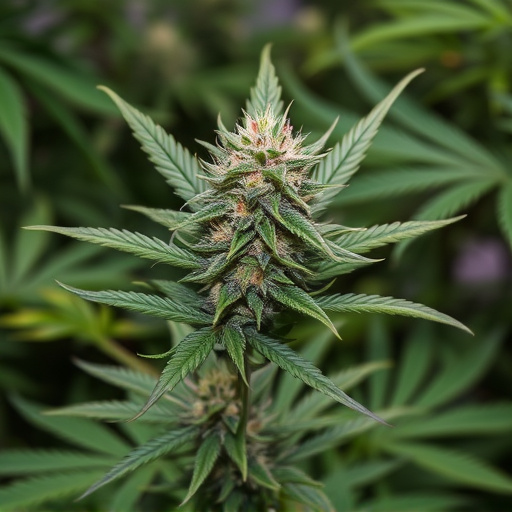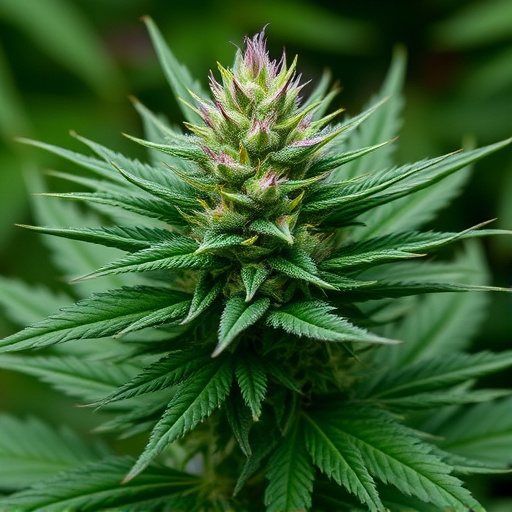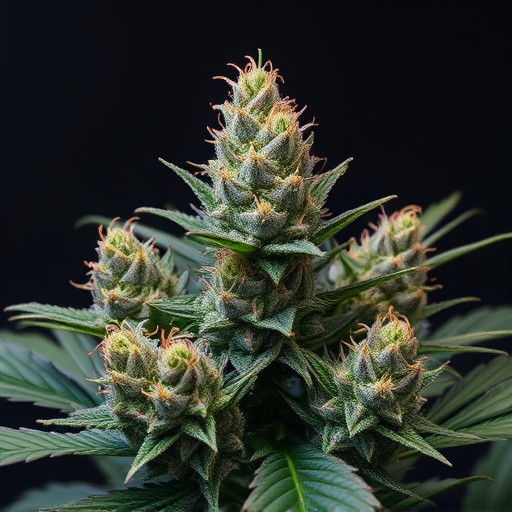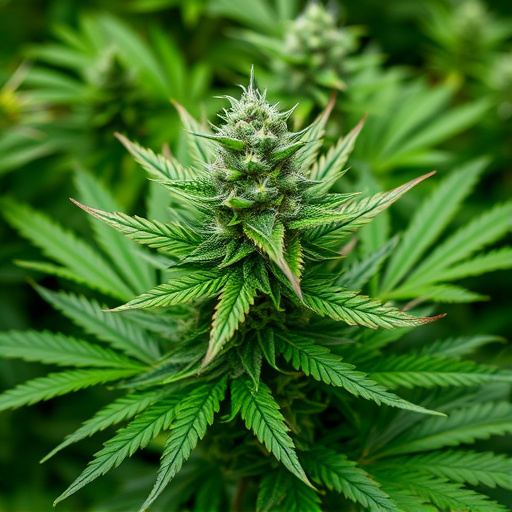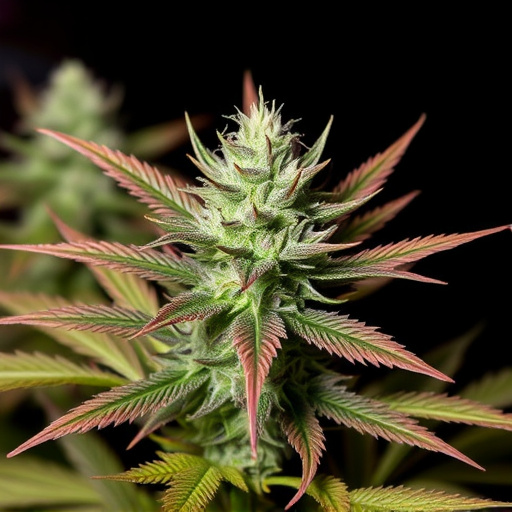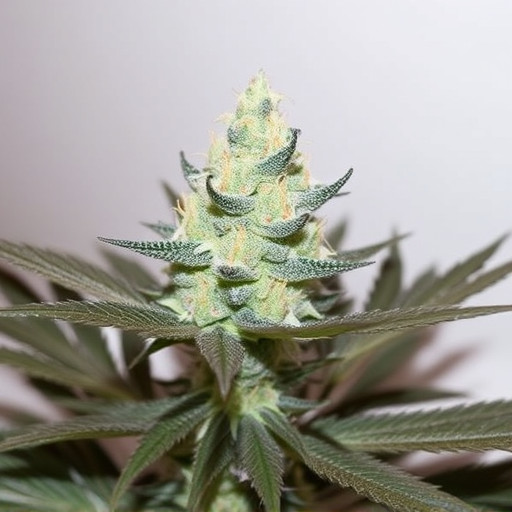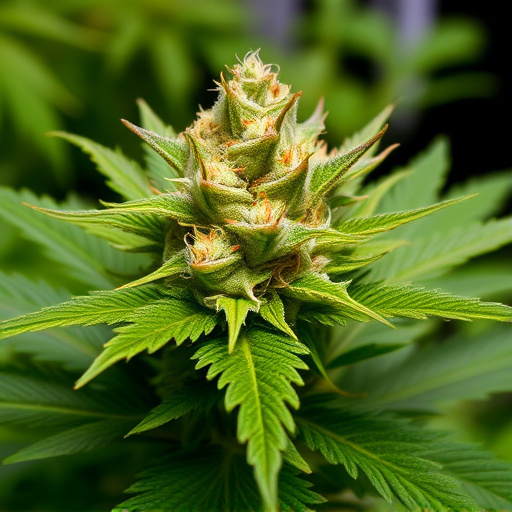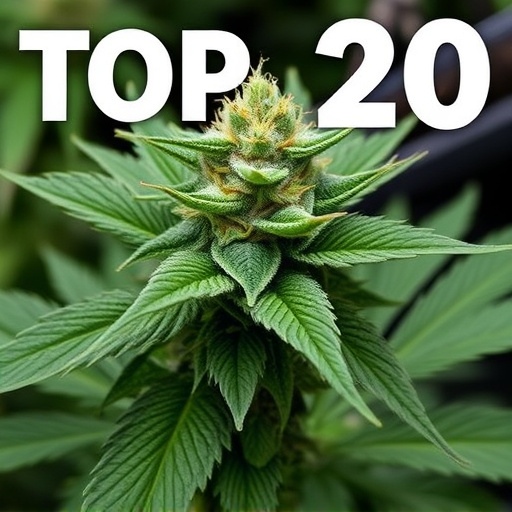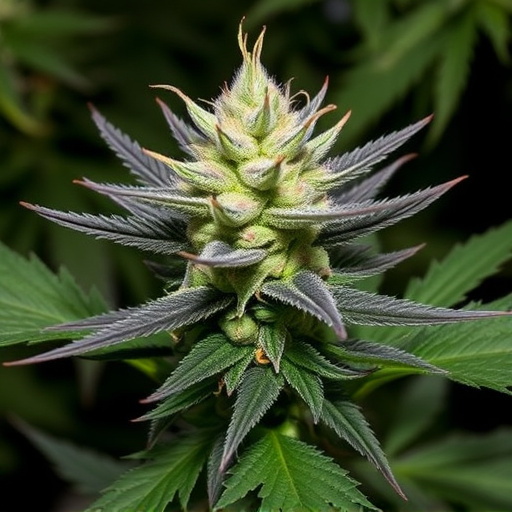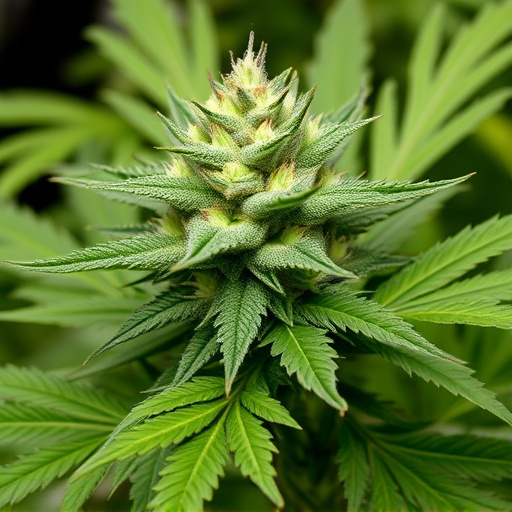THC, a key compound in cannabis, interacts with the endocannabinoid system to regulate hunger by mimicking natural cannabinoids and influencing hormones like ghrelin. The top 20 cannabis strains known for their high THC content, such as Blue Dream and Girl Scout Cookies, can stimulate appetite, offering potential relief for cachexia and eating disorder patients. However, risks include disrupted hunger hormones, increased cravings, weight gain, and desensitization of the endocannabinoid system with regular use; thus, caution is advised until long-term effects are fully understood.
“Unraveling the intricate relationship between THC (tetrahydrocannabinol) and hunger hormones offers a fascinating glimpse into the potential of cannabis as a culinary companion. This article explores how THC interacts with our body’s appetite-regulating mechanisms, shedding light on its impact on eating behaviors. We delve into the science behind it, presenting the top 20 cannabis strains known for their ability to stimulate appetite. Furthermore, we balance this discussion by examining both the potential benefits and risks of using THC for hunger control, providing a comprehensive guide for those curious about this intriguing topic.”
- Understanding THC and Its Interaction with Hunger Hormones
- The Top 20 Cannabis Strains for Appetite Stimulation
- Potential Benefits and Risks of Using THC for Hunger Control
Understanding THC and Its Interaction with Hunger Hormones

THC, or tetrahydrocannabinol, is a key compound found in cannabis that has gained significant attention for its diverse effects on the human body. When consumed, THC interacts with our endocannabinoid system (ECS), which plays a crucial role in regulating various physiological processes, including hunger and appetite. The ECS produces endogenous cannabinoids that bind to receptors in the brain and body, maintaining homeostasis.
THC mimics these natural cannabinoids by binding to specific receptors, particularly CB1 and CB2, leading to its well-known psychoactive effects. Interestingly, this interaction also influences hunger hormones. Studies have shown that THC can stimulate the release of ghrelin, often referred to as the “hunger hormone,” which signals the brain to induce feelings of appetite. This effect is particularly notable in the top 20 cannabis strains known for their high THC content, offering a unique interplay between the plant’s therapeutic properties and its impact on hunger regulation.
The Top 20 Cannabis Strains for Appetite Stimulation
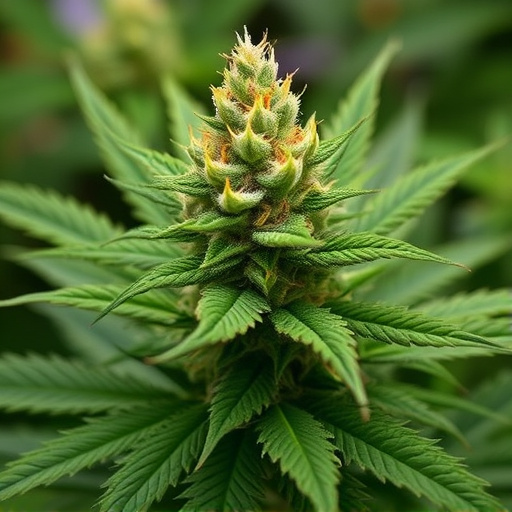
When it comes to stimulating appetite, certain cannabis strains have emerged as powerful allies. The plant’s active compounds, particularly Tetrahydrocannabinol (THC), have been shown to interact with the body’s endocannabinoid system, which plays a key role in regulating hunger and metabolism. Among the top 20 cannabis strains known for their appetite-boosting properties are:
1. Blue Dream: This popular strain is renowned for its high THC content and pleasant aroma. It provides a balanced effect that can enhance appetite without overwhelming senses.
2. Granddaddy Purple: Known for its rich, fruity flavors, this Indica dominant strain offers a relaxing yet stimulating experience, making it ideal for those seeking to increase their appetite.
3. Sour Diesel: With a potent THC profile and a distinct sour aroma, Sour Diesel can stimulate hunger and enhance taste perception.
4. Orangey Lemon: This hybrid strain combines the best of both parents, offering a zesty citrus flavor and a stimulating effect that may encourage eating.
5. Girl Scout Cookies: Renowned for its high THC levels, this potent strain provides a euphoric high that can also stimulate appetite.
6. Pineapple Express: Known for its tropical flavors, this hybrid strain’s energetic effects can help spur eating habits.
7. Northern Lights: An Indica-dominant strain known for its calming yet stimulating properties, Northern Lights may encourage snacking.
8. Afghani: This pure Indica strain offers a powerful relaxing effect that can also stimulate the body’s hunger response.
9. Akashamba: With a high CBD and low THC content, this strain provides a mild yet effective appetite stimulation without overwhelming effects.
10. Black Cherry Soda: This hybrid strain’s sweet cherry flavors mask its potent THC, providing a delightful way to boost appetite.
11. Super Carbon (SC): Known for its intense flavor profile, SC offers a robust THC experience that may encourage eating.
12. Blue Gelato: A creamy Indica-dominant hybrid with a soothing effect and potential to stimulate hunger.
13. Gelato 33: This potent strain’s sweet, berry flavors make it appealing while its effects can increase appetite.
14. Jack Herer: With a high THC content and invigorating scents, this strain may enhance taste and smell receptors, leading to increased hunger.
15. Mango Kush: Renowned for its tropical flavor profile, Mango Kush’s potent effects can stimulate eating habits.
16. Lime Pie: This hybrid strain combines citrusy notes with a relaxing yet stimulating effect, perfect for appetite stimulation.
17. Diamond OG: Known for its high THC levels and earthy flavors, this Indica dominant strain may encourage snacking.
18. Chocolaate Energy: With a name that suggests its effects, this hybrid provides an energetic boost along with potential appetite stimulation.
19. Super Silver Haze: This potent Sativa-dominant strain is known for its uplifting effects and ability to enhance taste perception.
20. Death Star: One of the strongest strains available, Death Star’s intense THC content can lead to significant increases in hunger.
Potential Benefits and Risks of Using THC for Hunger Control
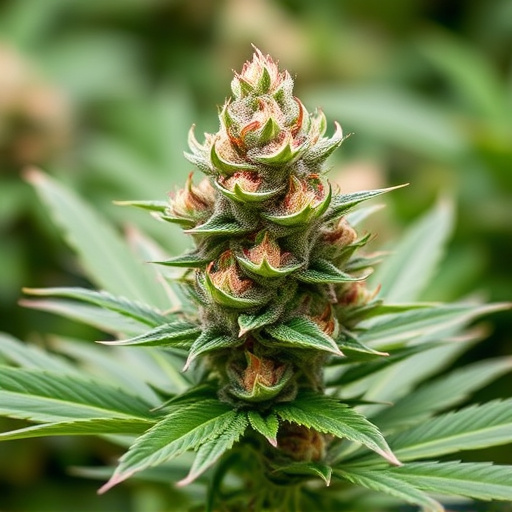
The use of THC, a prominent cannabinoid found in cannabis, for hunger control is a topic that has garnered interest and controversy. On one hand, it offers potential benefits for individuals dealing with eating disorders or conditions like cachexia (wasting away), where suppressing appetite can be life-saving. Research suggests that THC may stimulate the appetite, encouraging food intake and potentially aiding weight gain in patients who struggle to eat due to medical reasons. This is especially relevant when considering the top 20 cannabis strains known for their high THC content, which could provide a natural solution for these specific cases.
However, there are also risks associated with this practice. THC can disrupt hunger hormones and alter eating behaviors, leading to increased cravings and potential overeating. For some, this may result in weight gain or contribute to unhealthy dietary habits. Moreover, regular THC use can desensitize the body’s endocannabinoid system, potentially reducing its effectiveness over time. Therefore, while THC shows promise for specific applications, it should be approached with caution, especially as a long-term solution for managing hunger, and further research is needed to fully understand its effects on human physiology.
THC’s impact on hunger hormones is a fascinating aspect of cannabis’ complex profile. While it can stimulate appetite, leading to potential benefits in certain medical scenarios, especially for those experiencing anorexia or weight loss due to illness, its use is not without risks. The top 20 cannabis strains known for their appetite-stimulating properties offer variety in terms of potency and flavor. However, as with any substance, individual responses vary, and further research is needed to fully understand the scope of THC’s effects on hunger. Balancing the benefits and risks requires careful consideration and consultation with healthcare professionals.

